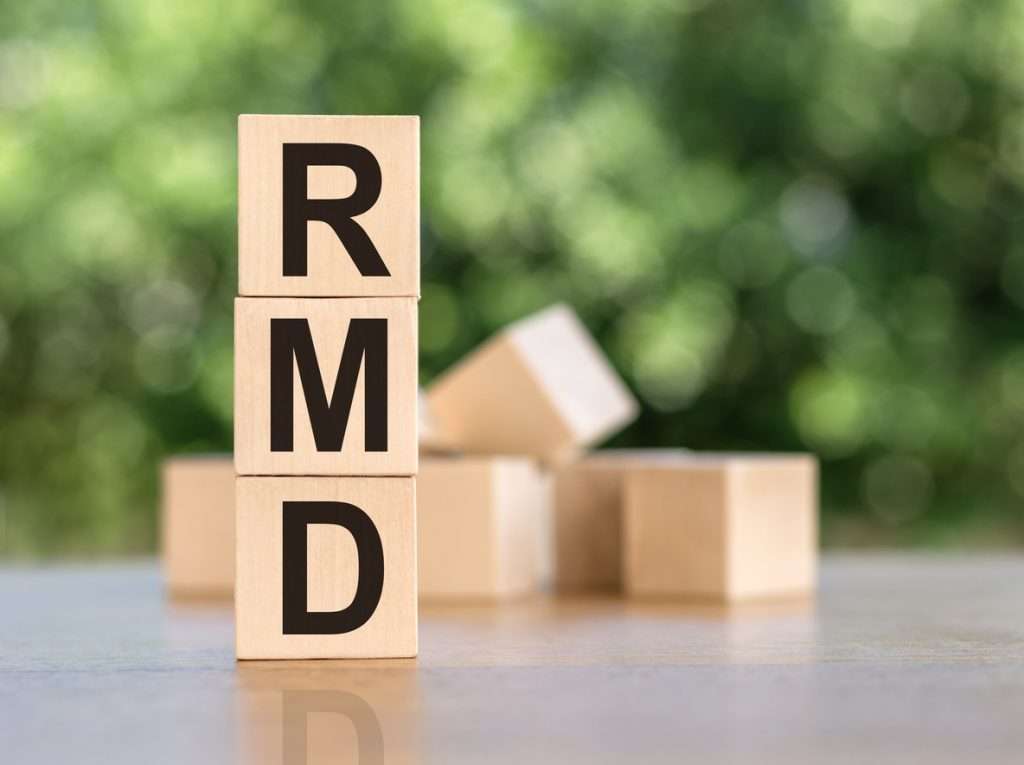Tax-Savvy Retirement: Maximize Income with 4 Strategies
You're missing out if you don't have a complete investment plan.
Let's talk and make sure you're making every dollar work for you.
Tax-Savvy Retirement: Maximize Income with 4 Strategies
When it comes to retirement taxation, it’s important to understand how different sources of income are taxed. Your retirement income can include various streams such as social security benefits, pensions, withdrawals from retirement accounts, and investment income. Each source of income may be subject to different tax rules and rates. For example, social security benefits may be partially taxable depending on your total income, and withdrawals from traditional retirement accounts are generally taxed as ordinary income. Your taxable income in retirement is the amount of income that is subject to taxation after deductions and exemptions.
Your tax bracket in retirement is determined by your taxable income. Tax brackets are income ranges with corresponding tax rates. The higher your taxable income, the higher your tax rate. It’s important to be aware of your tax bracket to make informed financial decisions and optimize your retirement income. Additionally, your tax bracket can affect other aspects of your finances, such as eligibility for certain tax credits or deductions.
How Retirement Income Gets Taxed
Retirement income is taxed differently depending on the source of the income. Here are the key points to understand about how retirement income gets taxed:
- Social Security Benefits: Depending on your total income, a portion of your social security benefits may be subject to federal income tax. Up to 85% of your social security benefits can be taxable, depending on your combined income (adjusted gross income plus nontaxable interest plus half of your social security benefits). The amount of taxable social security benefits is determined by a formula set by the IRS.
- Retirement Account Withdrawals: Withdrawals from traditional retirement accounts, such as traditional IRAs, 401(k)s, and 403(b)s, are generally taxed as ordinary income when you withdraw the money. The amount of tax you owe on these withdrawals depends on your tax bracket. Withdrawals from Roth retirement accounts, such as Roth IRAs, are generally tax-free if certain conditions are met.
- Investment Income: Income from investments, such as interest, dividends, and capital gains, can be subject to different tax rates depending on the type of investment and how long you held the investment. The tax rate on capital gains and qualified dividends is generally lower than the tax rate on ordinary income.

Key Differences Between Tax-Deferred and Roth Accounts
Understanding the key differences between tax-deferred and Roth accounts is crucial for effective tax planning in retirement. Here are the main differences to consider:
Tax Treatment: With tax-deferred accounts, such as traditional IRAs and 401(k)s, you contribute pre-tax dollars, meaning you don’t pay taxes on the money you contribute. However, withdrawals from these accounts in retirement are taxed as ordinary income. In contrast, with Roth accounts, such as Roth IRAs and Roth 401(k)s, you contribute after-tax dollars, meaning you pay taxes on the money you contribute. Qualified withdrawals from Roth accounts, including both contributions and earnings, are tax-free.
Tax Rate Considerations: The decision between tax-deferred and Roth accounts depends on your current tax rate and your anticipated tax rate in retirement. If you expect your tax rate to be higher in retirement, a Roth account can be beneficial since you pay taxes on the contributions at a lower rate now. If you expect your tax rate to be lower in retirement, a tax-deferred account can be advantageous since you can deduct the contributions from your taxable income now and pay taxes on the withdrawals at a potentially lower rate in retirement.
Strategy 1: Reverse Rollovers
One strategy to consider for tax-savvy retirement planning is reverse rollovers. Reverse rollovers involve moving money from a tax-deferred retirement account, such as a traditional IRA or 401(k), into a Roth IRA. This strategy can provide several benefits, including tax diversification, tax-free growth, and potential tax savings in retirement.
By executing a reverse rollover, you convert a portion of your tax-deferred retirement savings into a Roth IRA, which offers tax-free growth and tax-free withdrawals in retirement. This can be particularly advantageous if you anticipate being in a higher tax bracket in retirement or if you want to leave a tax-free inheritance to your beneficiaries. However, it’s important to consider the tax implications of a reverse rollover, as the amount converted is subject to income taxes in the year of the conversion. Consulting with a financial advisor can help you determine if a reverse rollover is the right strategy for your retirement plan.

What Are Reverse Rollovers?
A reverse rollover, also known as a Roth conversion or backdoor Roth IRA, is a strategy that allows you to move money from a tax-deferred retirement account, such as a traditional IRA or 401(k), into a Roth IRA. This conversion involves paying income taxes on the amount converted in the year of the conversion.
The main benefits of a reverse rollover include tax diversification and potential tax savings in retirement. By converting a portion of your tax-deferred retirement savings into a Roth IRA, you create a tax-free source of income in retirement. This can be advantageous if you anticipate being in a higher tax bracket in retirement or if you want to leave a tax-free inheritance to your beneficiaries.
It’s important to note that the amount converted is subject to income taxes in the year of the conversion. The tax implications of a reverse rollover depend on your individual financial situation, including your current tax bracket and anticipated future tax rates. Consulting with a financial advisor can help you determine if a reverse rollover is the right strategy for your retirement plan.
Benefits of Implementing Reverse Rollovers in Your Retirement Plan
Implementing reverse rollovers in your retirement plan can provide several benefits. Here are the key advantages of this strategy:
- Tax Diversification: By converting a portion of your tax-deferred retirement savings into a Roth IRA, you create a tax-free source of income in retirement. This can provide tax diversification and flexibility in managing your tax burden.

- Potential Tax Savings: If you anticipate being in a higher tax bracket in retirement, a reverse rollover can help you reduce your overall tax burden by paying taxes on the converted amount at a lower rate now.

- Flexibility in Withdrawals: Roth IRAs offer more flexibility in withdrawals compared to tax-deferred retirement accounts. With a Roth IRA, you can withdraw your contributions at any time without penalty. Additionally, qualified withdrawals of earnings from a Roth IRA are tax-free.

- Consult with a Financial Advisor: Implementing reverse rollovers can be complex, and it's important to consider the tax implications and long-term effects on your retirement savings. A financial advisor can provide guidance and help you determine if a reverse rollover is the right strategy for your individual financial situation.

Strategy 2: Qualified Charitable Distributions (QCD)

Another tax-savvy strategy to consider in retirement is making qualified charitable distributions (QCDs) from your tax-deferred retirement accounts. A QCD allows you to donate all or a portion of your required minimum distributions (RMDs) directly to a qualified charity. This can provide several tax advantages and help reduce your taxable income in retirement.
By making QCDs, you can fulfill your charitable giving goals while also reducing your tax liability. Here’s how QCDs work:
- Age Requirement: You must be at least 70 ½ years old to make QCDs.

- RMDs as QCDs: Instead of taking your RMDs as taxable income, you can request your retirement account custodian to distribute the amount directly to a qualified charity.

- Tax Advantages: QCDs are not included in your taxable income, which means they are not subject to federal income taxes. This can help reduce your taxable income and potentially lower your overall tax liability.

- Donation Limits: The maximum amount you can donate as a QCD is $100,000 per year. However, QCDs cannot exceed your total RMD amount for the year.

Consulting with a financial advisor can help you determine if QCDs are a suitable strategy for your retirement plan and charitable giving goals.
The Concept of QCD and Its Tax Advantages
QCDs, or qualified charitable distributions, are a tax-savvy strategy that allows you to donate all or a portion of your required minimum distributions (RMDs) from your tax-deferred retirement accounts directly to a qualified charity. This strategy offers several tax advantages, including the potential to reduce your tax bill. Here’s how QCDs work and the tax advantages they offer:
- Age Requirement: You must be at least 70 ½ years old to make QCDs.

- RMDs as QCDs: Instead of taking your RMDs as taxable income, you can instruct your retirement account custodian to distribute the amount directly to a qualified charity.

- Tax Advantages: QCDs are not included in your taxable income, which means they are not subject to federal income taxes. This can help reduce your taxable income and potentially lower your overall tax liability. By reducing your taxable income, you may also qualify for other tax deductions or credits.

- Tax Deductions: While you cannot claim a charitable deduction for QCDs, you still benefit from the tax advantage of not including the distribution in your taxable income. This can be especially advantageous if you do not itemize deductions or if your charitable contributions exceed the standard deduction.

It’s important to consult with a financial advisor to ensure that QCDs align with your retirement plan and charitable giving goals.
How to Execute QCDs Effectively
Executing QCDs effectively requires careful planning and coordination. Here’s how to implement this tax-savvy strategy in your retirement plan:
- Understand the Tax Code: Familiarize yourself with the rules and requirements for QCDs. Ensure that you meet the age requirement of 70 ½ or older and understand the limitations and restrictions associated with this strategy.

- Determine Your RMD Amount: Calculate your required minimum distribution (RMD) for the year from your tax-deferred retirement accounts. This is the amount that you are required to withdraw annually once you reach a certain age.

- Identify Qualified Charities: Research and select the charitable organizations that you wish to support with your QCDs. Ensure that these organizations meet the criteria set by the IRS to qualify for QCDs.

- Coordinate with Your Retirement Account Custodian: Contact your retirement account custodian and provide them with the necessary instructions to execute the QCDs. They will help facilitate the distribution of your RMD directly to the qualified charity.

- Keep Records: Maintain documentation of your QCDs for tax purposes. This includes receipts or acknowledgement letters from the charitable organizations, as well as any necessary tax forms or statements.

- Monitor Changes in the Tax Code: Stay informed about any changes in the tax code that may impact QCDs or your retirement plan in general. Consult with a financial advisor or tax professional to ensure that you are implementing QCDs effectively and in accordance with current regulations.

Implementing QCDs effectively requires proactive planning and coordination with your retirement account custodian and the charitable organizations you wish to support. Consulting with a financial advisor can provide you with personalized guidance and ensure that QCDs align with your overall wealth management strategy.
Strategy 3: Roth Conversions

Roth conversions are a tax-savvy strategy that involves converting money from a tax-deferred retirement account, such as a traditional IRA or 401(k), into a Roth account. This strategy can be beneficial if you anticipate being in a higher tax bracket in the future or if you want to leave a tax-free inheritance to your beneficiaries. By converting to a Roth account, you pay taxes on the converted amount in the year of the conversion, but qualified withdrawals from the Roth account are tax-free. Consult with a financial advisor to determine if Roth conversions are right for your retirement plan.
Here’s what you need to know about the process and benefits of Roth conversions:
- Tax Treatment: With a Roth conversion, you pay taxes on the amount converted in the year of the conversion. Once the money is in a Roth account, it grows tax-free, and qualified withdrawals from the account are tax-free as well.

- Tax-Free Growth: One of the main benefits of a Roth conversion is the potential for tax-free growth. Since the funds in a Roth account grow tax-free, you don’t have to pay taxes on the investment earnings. This can result in significant tax savings over time.

- Flexible Tax Strategies: By converting to a Roth account, you can create flexibility in your tax strategies. For example, if you anticipate being in a higher tax bracket in the future, a Roth conversion can help you pay taxes on the converted amount at a lower rate now.

- Beneficiary Benefits: Roth accounts offer advantages for your beneficiaries as well. After you pass away, your beneficiaries can inherit the Roth account tax-free, which can provide them with a valuable tax-free source of income.

It’s important to consult with a financial advisor to determine if a Roth conversion is the right strategy for your retirement plan. A financial advisor can help you assess your current tax situation, project future taxes, and determine if a Roth conversion aligns with your long-term financial goals.
Timing and Tax Considerations for Roth Conversions
Timing and tax considerations are crucial when it comes to Roth conversions. Making the right decisions about when and how much to convert can have a significant impact on your tax liability and overall retirement plan. Here are some key factors to consider:
- Tax Bracket: Assess your current tax bracket and compare it to your anticipated future tax bracket. If you expect to be in a higher tax bracket in the future, it may be advantageous to convert a larger amount to a Roth account now.

- Financial Situation: Evaluate your current financial situation and liquidity needs. Converting a large amount to a Roth account may require a significant upfront payment of taxes. Ensure that you have sufficient funds to cover the tax liability without jeopardizing your financial stability.

- Tax-Savvy Investor: Consider your overall tax strategy and long-term financial goals. A tax-savvy investor is mindful of balancing current tax savings with future tax benefits. Assess how a Roth conversion fits into your broader tax planning and wealth management strategy.

It’s important to note that Roth conversions are irreversible. Once you convert funds to a Roth account, you cannot undo the conversion. Therefore, careful planning and analysis are essential for making informed decisions about timing and the amount to convert. Consulting with a financial advisor can provide you with personalized guidance and ensure that you’re maximizing the benefits of a Roth conversion while minimizing your tax liability.
Tax Consideration | Description |
Tax Bracket | Evaluate your current tax bracket and compare it to your anticipated future tax bracket. Consider converting a larger amount to a Roth account if you expect to be in a higher tax bracket in the future. |
Financial Situation | Assess your current financial situation and liquidity needs. Ensure that you have enough funds to cover the tax liability without jeopardizing your financial stability. |
Tax-Savvy Investor | Consider your overall tax strategy and long-term financial goals. Balance current tax savings with future tax benefits and assess how a Roth conversion fits into your broader tax planning and wealth management strategy. |
Professional Guidance | Consult with a financial advisor or tax professional to assess your specific situation and determine the optimal timing and amount for a Roth conversion. A tax professional can provide personalized advice based on your individual financial circumstances. |
Strategy 4: After-Tax Contributions to a 401(k)
Making after-tax contributions to a 401(k) is a tax-savvy strategy that can help you maximize your retirement savings. Unlike traditional pre-tax contributions, after-tax contributions are made with money that has already been taxed. By making after-tax contributions, you can potentially create a source of tax-free income in retirement. Consult with a financial advisor to determine if this strategy aligns with your retirement goals and tax planning needs.

The Mechanics of After-Tax 401(k) Contributions
After-tax contributions to a 401(k) plan allow you to save additional money for retirement beyond the standard pre-tax contributions. Here’s how the mechanics of after-tax 401(k) contributions work:
- Contribution Limits: The total contribution limit for a 401(k) plan, including both pre-tax and after-tax contributions, is $19,500 for individuals under 50 years old and $26,000 for individuals 50 years old and above in 2021. These limits are subject to annual adjustments by the IRS.

- After-Tax Contributions: After-tax contributions are made with money that has already been taxed. These contributions are not tax-deductible, meaning you don’t receive an immediate tax benefit when you contribute. However, the earnings on after-tax contributions grow tax-deferred, meaning you don’t pay taxes on the investment gains until you withdraw the money in retirement.

- Tax-Free Income in Retirement: By making after-tax contributions, you can potentially create a source of tax-free income in retirement. When you withdraw the money in retirement, only the earnings on the after-tax contributions are subject to taxes, not the original after-tax contributions themselves.

It’s important to consult with a financial advisor and review your employer’s 401(k) plan rules to understand the specifics of after-tax contributions and how they fit into your overall retirement and tax planning strategy.
How After-Tax Contributions Enhance Your Retirement Savings
Making after-tax contributions to a 401(k) can enhance your retirement savings in several ways. Here are the key benefits of after-tax contributions:
- Asset Location Strategy: By making after-tax contributions, you can create a tax-efficient asset location strategy. After-tax contributions are made with money that has already been taxed, meaning the withdrawals in retirement are tax-free. This can provide you with flexibility in managing your tax burden in retirement.

- Overall Savings: After-tax contributions allow you to save more money for retirement beyond the standard pre-tax contributions. This can help you build a larger nest egg and provide you with more financial security in retirement.

- Tax Burden Management: By creating a source of tax-free income in retirement through after-tax contributions, you can potentially reduce your overall tax burden. This can help you maximize your retirement income and keep more money in your pocket.

- Consult with a Financial Advisor: It’s important to consult with a financial advisor to determine if after-tax contributions are right for your retirement plan. A financial advisor can help you assess your individual financial situation, review your employer’s 401(k) plan rules, and provide guidance on maximizing your retirement savings through after-tax contributions.

Frequently Asked Questions
Yes, you can implement these tax strategies at any age. However, the effectiveness of each strategy may vary depending on your individual circumstances, such as life expectancy, financial goals, and retirement plan. It’s recommended to work with a financial advisor who can assess your situation and provide personalized advice on the best strategies for you.
Determining the best strategy for you depends on factors such as your financial situation, tax bracket, retirement goals, and risk tolerance. A financial advisor can help you assess your individual circumstances and recommend the most suitable strategy to maximize your income in retirement while minimizing tax liabilities.
Potential risks with Roth conversions include increased tax liabilities in the year of conversion, potential changes in tax laws that could impact the benefits of a Roth conversion, and the risk of paying taxes at a higher rate than anticipated. It’s important to consult with a financial advisor to assess the risks and benefits of Roth conversions in your specific situation.
Qualified Charitable Distributions (QCDs) can reduce your Required Minimum Distributions (RMDs) because they count towards your RMDs and are not subject to income tax. This can lower your taxable income and potentially reduce your overall tax liability in retirement. Consult with a financial advisor to understand the impact of QCDs on your specific retirement plan.
Yes, there are contribution limits to after-tax contributions to a 401(k). As of 2021, the annual contribution limit for combined employee and employer contributions to a 401(k) is $58,000 ($64,500 for individuals age 50 and older). However, the specific limits may vary depending on your age and the rules set by your employer’s retirement plan. It’s important to consult with your employer or a financial advisor to understand the contribution limits and tax implications of after-tax contributions to your 401(k).
HSAs can be used for non-medical expenses in retirement, but there may be tax penalties and additional regulations to consider. While HSA funds can be withdrawn for any purpose after age 65 without penalty, withdrawals for non-medical expenses are subject to income tax. It’s important to understand the rules and regulations surrounding HSAs to make informed decisions about using HSA funds for non-medical expenses in retirement.
The main difference between traditional and non-deductible IRAs is the tax treatment of contributions. Contributions to a traditional IRA may be tax-deductible depending on your income and participation in an employer-sponsored retirement plan. Non-deductible IRAs, on the other hand, do not offer a tax deduction for contributions. Both types of IRAs allow for tax-deferred growth, but the tax treatment of withdrawals differs. Withdrawals from traditional IRAs are subject to income tax, while withdrawals from non-deductible IRAs may be partially taxable depending on the proportion of after-tax contributions. It’s important to consult with a financial advisor to understand the differences and determine which type of IRA is most suitable for your retirement savings goals.
It’s recommended to review your retirement tax strategies at least annually or whenever there are significant changes in your financial situation, retirement plan, or tax laws. Regular reviews with a financial advisor can ensure that your strategies are optimized for your current goals and the most up-to-date tax laws.

conclusion
In conclusion, optimizing your retirement income through tax-savvy strategies can significantly impact your financial future. Understanding the nuances of retirement taxation, utilizing reverse rollovers, qualified charitable distributions, Roth conversions, after-tax contributions, and maximizing HSAs can help you maximize income and minimize tax liabilities. By integrating these strategies into your retirement plan, you can enhance your savings and secure a tax-efficient financial future. Stay informed, seek professional advice, and regularly review your retirement tax strategies to ensure they align with your long-term goals and financial well-being.